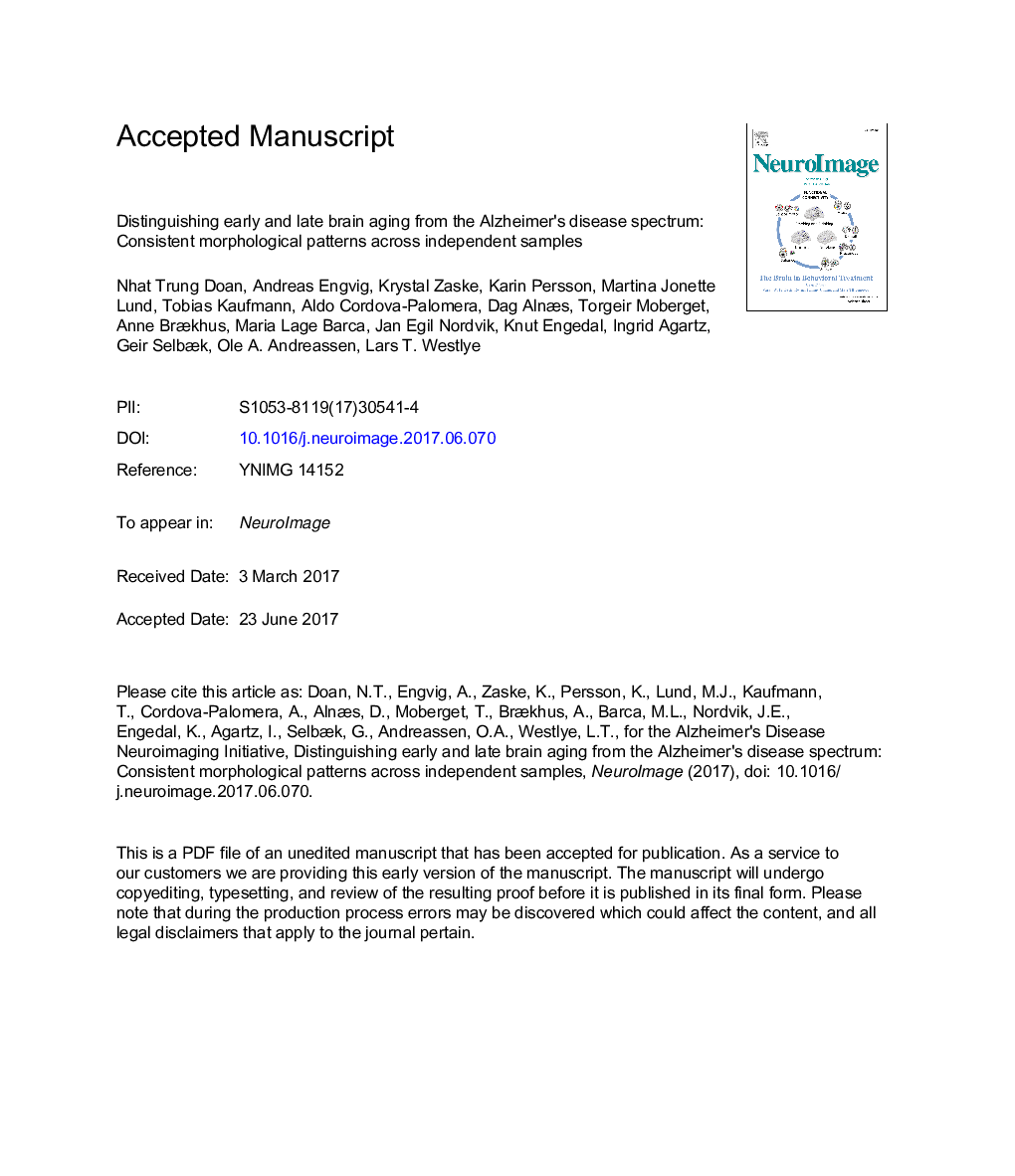| Article ID | Journal | Published Year | Pages | File Type |
|---|---|---|---|---|
| 5630982 | NeuroImage | 2017 | 51 Pages |
Abstract
Alzheimer's disease (AD) is a debilitating age-related neurodegenerative disorder. Accurate identification of individuals at risk is complicated as AD shares cognitive and brain features with aging. We applied linked independent component analysis (LICA) on three complementary measures of gray matter structure: cortical thickness, area and gray matter density of 137 AD, 78 mild (MCI) and 38 subjective cognitive impairment patients, and 355 healthy adults aged 18-78 years to identify dissociable multivariate morphological patterns sensitive to age and diagnosis. Using the lasso classifier, we performed group classification and prediction of cognition and age at different age ranges to assess the sensitivity and diagnostic accuracy of the LICA patterns in relation to AD, as well as early and late healthy aging. Three components showed high sensitivity to the diagnosis and cognitive status of AD, with different relationships with age: one reflected an anterior-posterior gradient in thickness and gray matter density and was uniquely related to diagnosis, whereas the other two, reflecting widespread cortical thickness and medial temporal lobe volume, respectively, also correlated significantly with age. Repeating the LICA decomposition and between-subject analysis on ADNI data, including 186 AD, 395 MCI and 220 age-matched healthy controls, revealed largely consistent brain patterns and clinical associations across samples. Classification results showed that multivariate LICA-derived brain characteristics could be used to predict AD and age with high accuracy (area under ROC curve up to 0.93 for classification of AD from controls). Comparison between classifiers based on feature ranking and feature selection suggests both common and unique feature sets implicated in AD and aging, and provides evidence of distinct age-related differences in early compared to late aging.
Keywords
HcyMMSEVBMICAGMDGLMFWHMMTLAUCmild cognitive impairmentSubjective cognitive impairmentMRIAlzheimer's diseaseIndependent component analysisMagnetic resonance imagingfull-width at half maximumsciMedial temporal lobeGLM, General Linear ModelMini-Mental State Examinationvoxel-based morphometryMCILICAGray matter densityMachine learning
Related Topics
Life Sciences
Neuroscience
Cognitive Neuroscience
Authors
Nhat Trung Doan, Andreas Engvig, Krystal Zaske, Karin Persson, Martina Jonette Lund, Tobias Kaufmann, Aldo Cordova-Palomera, Dag Alnæs, Torgeir Moberget, Anne Brækhus, Maria Lage Barca, Jan Egil Nordvik, Knut Engedal, Ingrid Agartz, Geir Selbæk,
